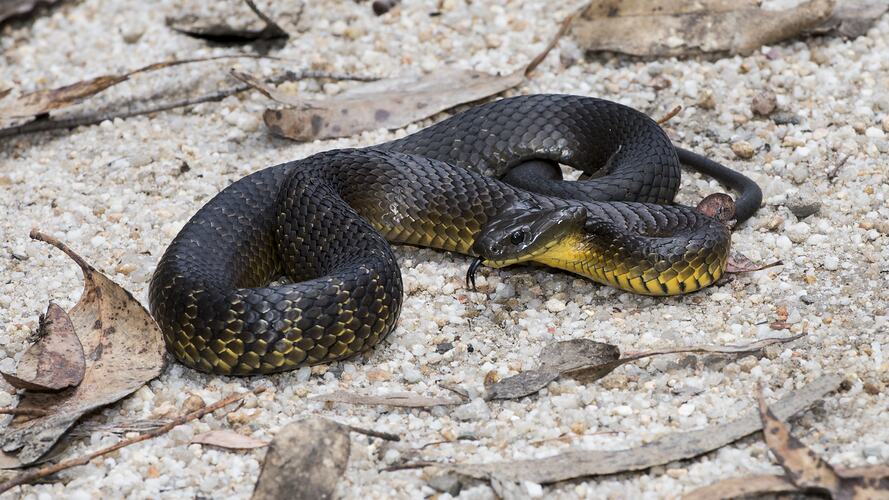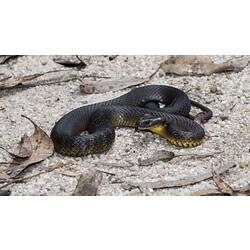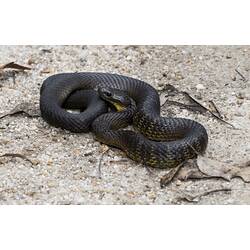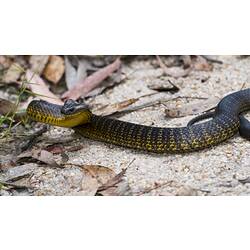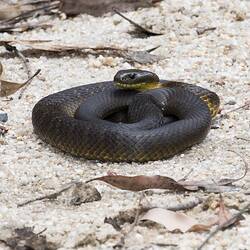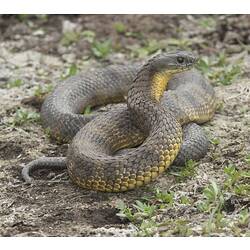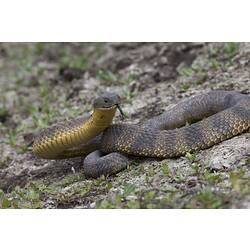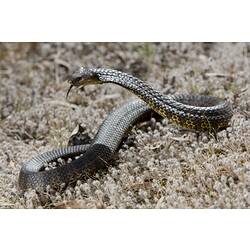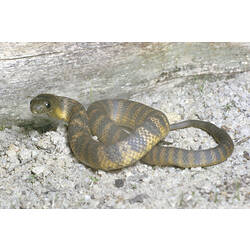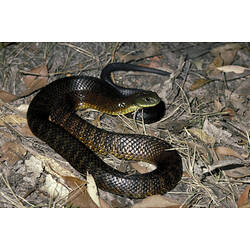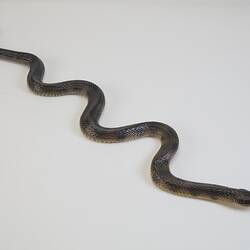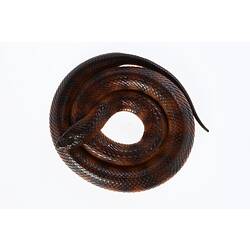General Description
A solidly built snake with a large head that is not distinct from the body. Tiger Snakes are variable in colour, ranging from light grey to blackish brown. They usually have a series of yellow-edged crossbands (giving them the name 'tiger'), but may lack bands completely. The belly is cream, yellow or grey with darker grey under the throat. Average of 1.2 m total length.
Biology
Tiger Snakes are active during the day (diurnal) and in the twilight (crepuscular) and may also be active at night (nocturnal) in warm weather. Females give birth to live young, averaging about 30 young at one time.
Distribution
South-eastern mainland Australia, from south-eastern Queensland, through New South Wales and Victoria to south-eastern South Australia, and Tasmania.
Habitat
Found in broad range of habitats from rainforest to dry open sclerophyll and river floodplains.
More Information
-
Animal Type
-
Animal SubType
-
Brief Id
A large snake, variable in colour, ranging from light grey to blackish brown, usually with series of yellow edged crossbands.
-
Colours
Brown, Grey, Grey-brown, Yellow, Cream
-
Maximum Size
1.2 m
-
Habitats
-
Diet
Carnivore
-
Diet Categories
Frogs
-
Hazards
Potentially lethal bite, venom is toxic to humans.
-
Endemicity
-
Commercial
No
-
Conservation Statuses
CITES: Not listed, FFG Threatened List: Not listed, EPBC Act 1999: Not listed, IUCN Red List: Least Concern
-
Taxon Name
-
Scientific Author
(Peters, 1861)
-
Common Name
Tiger Snake
-
Kingdom
-
Phylum
-
Subphylum
-
Class
-
Subclass
-
Order
-
Suborder
-
Superfamily
-
Family
-
Genus
-
Species Name
scutatus
